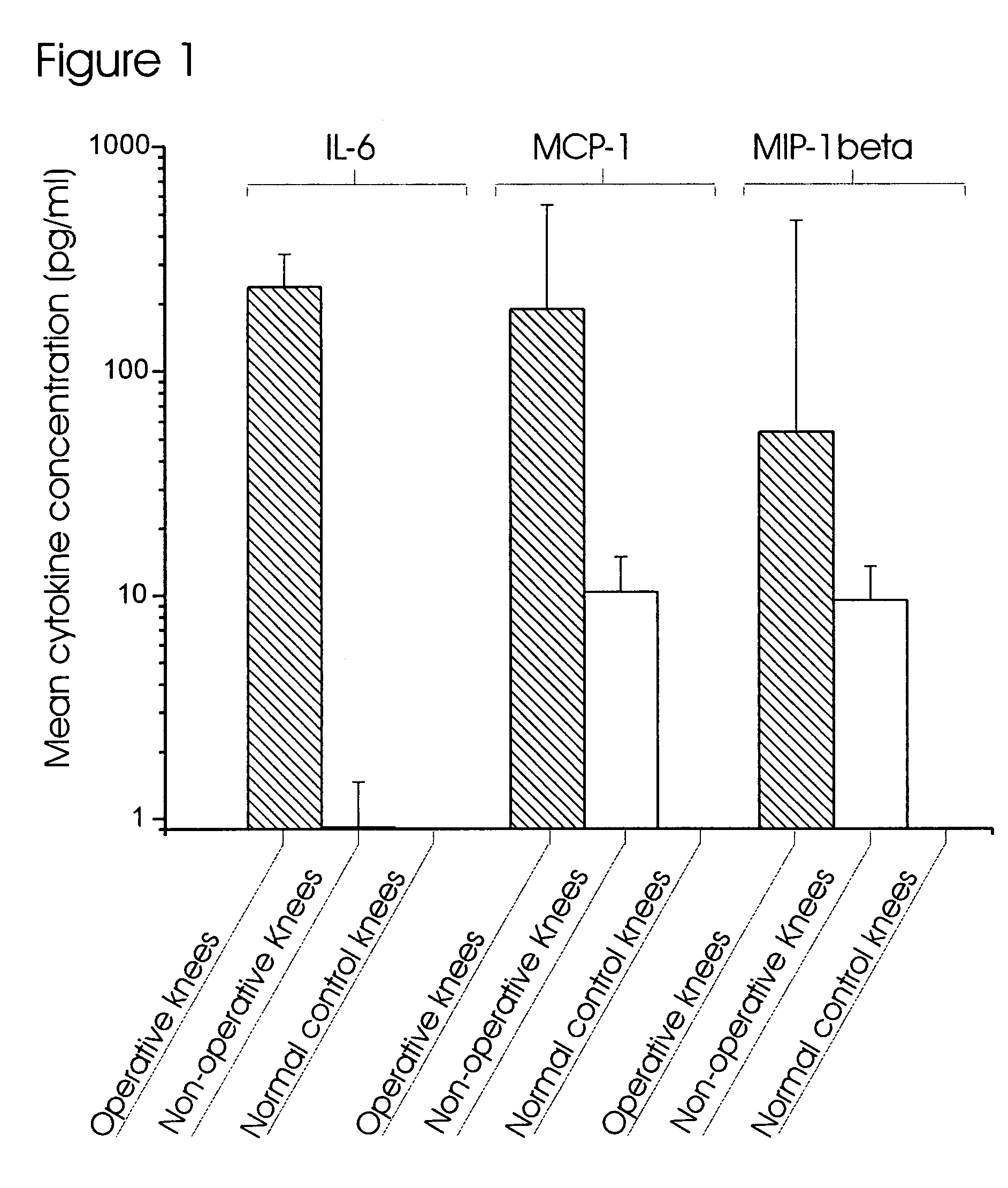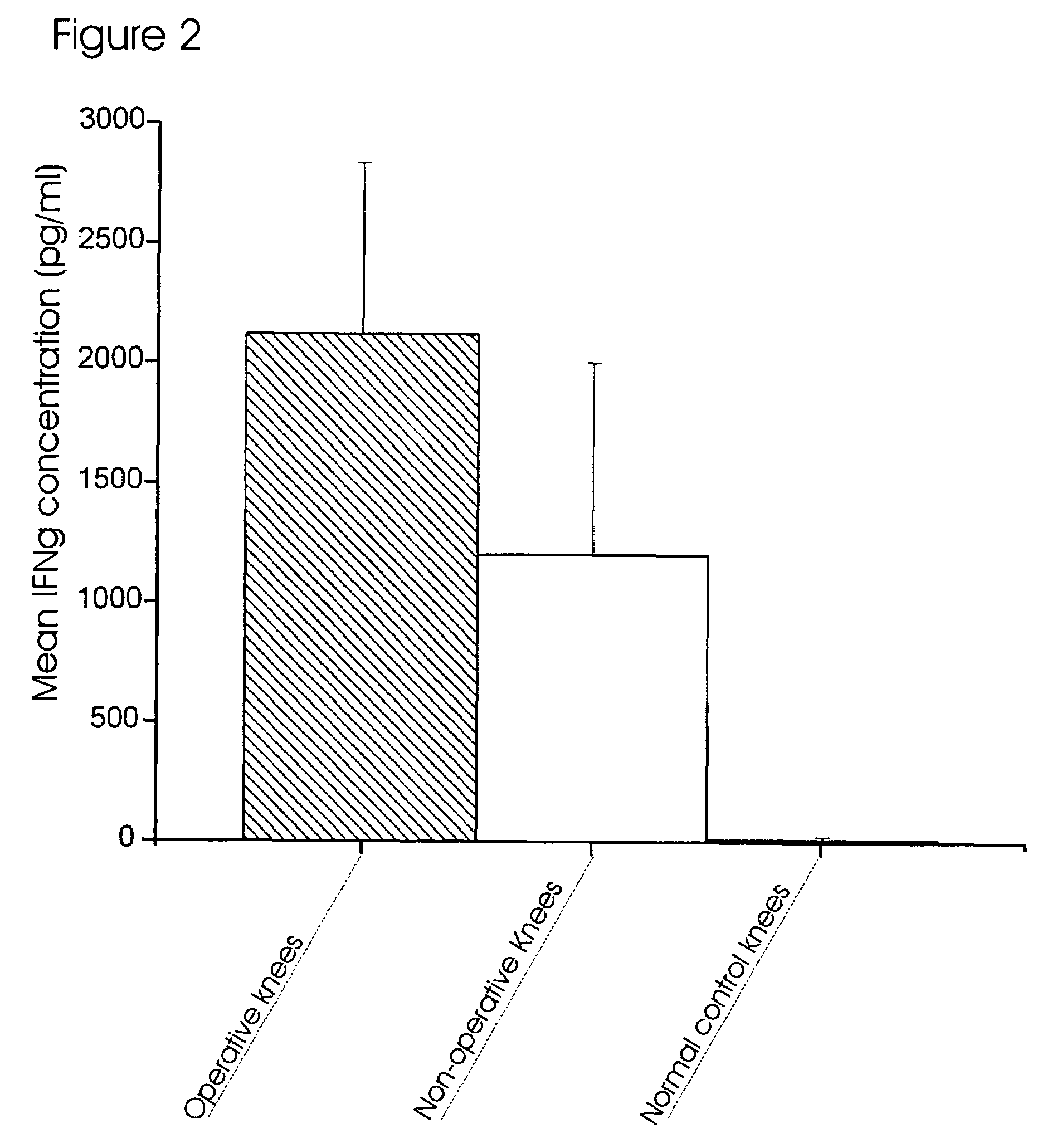Method for diagnosing and treating acute joint injury
a joint injury and acute treatment technology, applied in the field of acute treatment of acute joint injuries, can solve the problems of joint injury, physicians currently do not have a system or method available to differentiate acute injuries, and it is difficult to determine the appropriate course of treatment for a given patien
- Summary
- Abstract
- Description
- Claims
- Application Information
AI Technical Summary
Benefits of technology
Problems solved by technology
Method used
Image
Examples
example 1
Subjects and Knee Lavage
[0125]This prospective, cohort study was approved by the Institutional Review Boards of Parkway Regional Medical Center and the University of Miami, Jackson Memorial Medical Center. Forty-three subjects were enrolled in the study after providing their informed consent. Between the dates of July 2006 and June 2007, patients were selected from a cohort of approximately 200 patients referred for the evaluation of knee pain to two board-certified orthopaedic surgeons, fellowship-trained in sports medicine. All patients underwent a routine focused physical examination and a Magnetic Resonance Imaging (MRI) of the knee. MRI scans were read and interpreted by a single, independent, board-certified radiologist. Patients were asked to rate the pain in both knees on a 0-10 visual analog scale (VAS). Patients deemed appropriate to undergo arthroscopic surgery as part of their treatment were asked to participate in the study. Not all patients who participated in the stud...
example 2
Inclusion and Exclusion Criteria
[0128]Inclusion criteria: Patients 18-80 years old presenting with symptoms of knee pain, either secondary to arthritis or a traumatic event and who satisfied clinical indications for arthroscopic surgery following MRI of the symptomatic knee.
[0129]Exclusion criteria: less than 18 years old, recent (within 3 months) intra-articular corticosteroid injection, past or current medical history of autoimmune disease. In addition, no patients involved in a worker's compensation claim or personal injury litigation, were enrolled in the study.
example 3
Cytokine Analysis
[0130]The concentrations of 17 inflammatory cytokines and chemokines (IFNγ, IL-2, IL-4, IL-5, IL-6, IL-7, IL-8, IL-10, IL-12, IL-13, IL-17, G-CSF, GM-CSF, TNFα, IL-1β, MCP-1 and MIP-1β) were quantified in knee lavage samples using the human 17-plex inflammatory cytokine panel and the Bio-Plex 200 System (Bio-Rad, Hercules, Calif.), following the manufacture's protocol in a 96-well plate format. This assay utilized a sandwich ELISA linked to polystyrene beads and fluorophores, and has been validated against standard ELISAs of human blood samples (de Jager et al. 2003).
PUM
| Property | Measurement | Unit |
|---|---|---|
| dissociation constant | aaaaa | aaaaa |
| temperatures | aaaaa | aaaaa |
| degrees of force | aaaaa | aaaaa |
Abstract
Description
Claims
Application Information
 Login to View More
Login to View More - R&D
- Intellectual Property
- Life Sciences
- Materials
- Tech Scout
- Unparalleled Data Quality
- Higher Quality Content
- 60% Fewer Hallucinations
Browse by: Latest US Patents, China's latest patents, Technical Efficacy Thesaurus, Application Domain, Technology Topic, Popular Technical Reports.
© 2025 PatSnap. All rights reserved.Legal|Privacy policy|Modern Slavery Act Transparency Statement|Sitemap|About US| Contact US: help@patsnap.com


